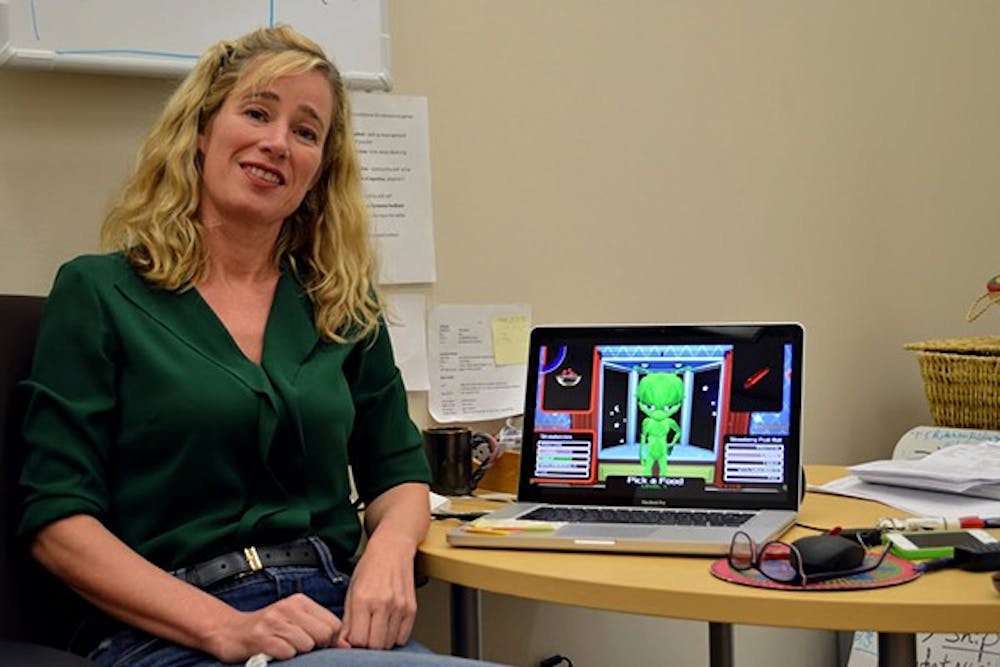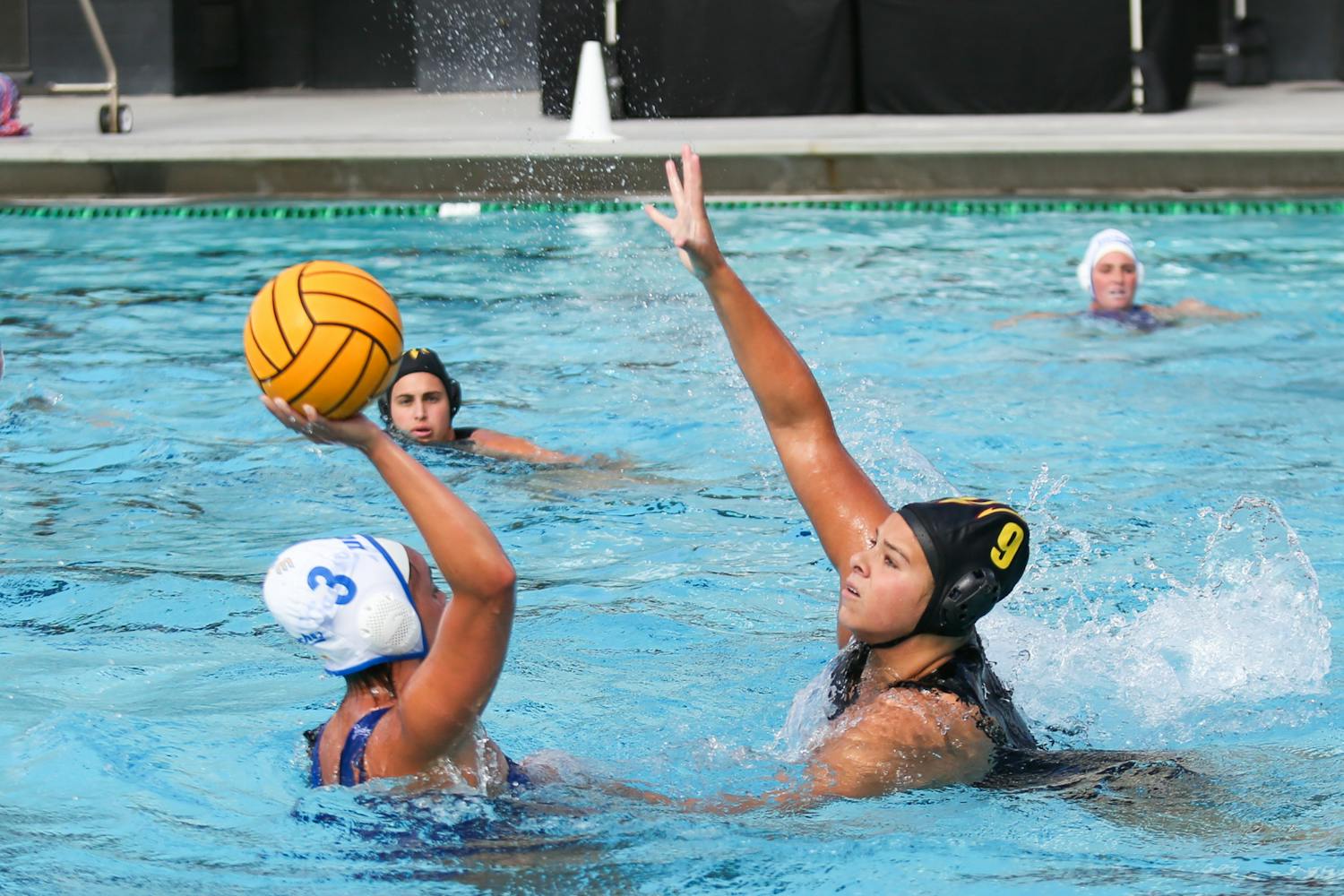 Mina C. Johnson-Glenberg, Ph.D. associate research professor is developing Unity-Based Education games for the Learning Sciences Institute at ASU. (Photo by Axel Everitt )
Mina C. Johnson-Glenberg, Ph.D. associate research professor is developing Unity-Based Education games for the Learning Sciences Institute at ASU. (Photo by Axel Everitt )
Textbooks and study guides may fall by the wayside as interactive learning games are starting to become more popular and more effective.
Graduate students and professors at ASU have already embraced the idea of embodied learning games.
Professor Mina Johnson-Glenberg combined digital technology with physical movement to create mixed-reality learning games to help students learn science, technology, engineering and mathematics concepts.
Johnson-Glenberg said the team designs all of its content to what is applicable to what students are learning.
“For example, if you are learning about levers, we use the arm as the lever, and students can change the length of the lever by stretching their arms,” she said.
Johnson-Glenberg is the director of the Embodied Games for Learning lab at ASU. She recently developed The Alien Health Game, which is designed for middle school students and teaches them the importance of a healthy diet and exercise.
Players are told they have awakened the alien from under their bed and must feed it to make it happy. The game senses movement so the players can drag and drop different foods into the alien’s mouth by motioning their arms and hands.
The sensor of the game sends out infrared light, and it bounces off the player’s body back to another sensor, so it knows the position of the player’s body.
Johnson-Glenberg said one of the cameras on the sensor can also track RGB, a color model.
“We are trying to develop other games where your avatar will match the clothes to user is wearing to keep the player more engaged,” she said. “If you were wearing a green shirt and blue pants, your avatar will wear a green shirt and blue pants.”
Educational technology graduate student Matthew Henry was one of the game's programmers. He said the biggest pitfall in coding for embodied games comes in trying to develop code that can determine intent.
“As humans, we use gestures all the time,” he said. “We talk with our hands and bodies as often as we talk with our words, but the computer has difficulty telling if you are waving your hand, because you want the computer to perform a task”
Henry said they also ran into problems in coding people with different body types. Not only did they have to worry about left- vs. right-handedness, they also had to worry about the length of a user’s arms or legs when determining a gesture.
“The answer may vary from one person to the next, and so we struggle to design code that works for all possible users,” he said.
Despite these pitfalls, Johnson-Glenberg and her team were able to create a finished product.
Johnson-Glenberg said in the Alien Health Game, players are given a choice of different foods with varying nutritional value. The idea is to give the alien the healthiest foods. Unhealthy foods make the alien sick.
“The idea is that with enough time and practice the kid will understand what choices to make,” she said. “Some students like to be bad and give the alien unhealthy foods.”
Johnson-Glenberg said she also incorporated exercise into the game.
After dropping the food into the alien’s mouth, players are instructed to do various exercises like dancing or jumping jacks to help the alien metabolize the food.
As players move up in the game, they have to construct a balanced meal for the alien. Because it is a two-player game, players can collaborate to make the correct choices.
Johnson-Glenberg said there is a lot of research that shows there is better retention when students are using their bodies to learn.
“With embodied learning, you remember things longer,” she said.
In her research, she compared kids who studied from textbooks to those who used embodied games to learn the material. Although those who studied through more traditional methods scored higher on the immediate test, they ended up scoring lower than those who used embodied games on a test given to both subjects a week later.
Economic sophomore Fabeeha Ahmed said she thinks embodied games can cater to all sorts of learners.
“There are many types of learners, and studying from a textbook isn’t for everyone,” she said.
Johnson-Glenberg said she wanted to keep middle school students on the STEM track. It is meant to improve competitiveness in technology development.
“I believe that to maintain engagement and motivation with STEM learning, we should be creating fun games that integrate STEM learning with the principles we know about game design,” she said.
Reach the reporter at kgrega@asu.edu or follow her on Twitter @kelciegrega




